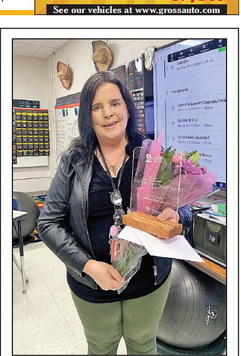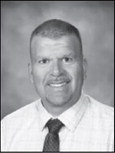Thank you, teachers
What do teachers do?
If you look up the definition of teacher in a dictionary, it returns the unhelpful answer of “one who teaches.”
Not many of us would have made it through the fourth grade if we had returned such an answer on a vocabulary quiz. Our teachers would have expected more.
A better answer would be a “person who helps students to acquire knowledge, competence, or virtue, via the practice of teaching.”
Throughout our lives we have many teachers. Parents are our first teachers; they lay the groundwork and prepare us for journeys of lifelong learning.
As we grew and matured, we entered school, and whether it was kindergarten or a pre-K program, we learned the routines and formalities of a classroom setting. Our teachers taught us our letters and numbers — that A is for apple and H is for hippos.
As we grew older, the lessons changed and shifted. We went from learning to read, to reading to learn. Our math lessons advanced from the basics of addition and subtraction to long division, algebra, geometry and beyond.
We were taught the names and places in geography and history and were encouraged to think about why events happened beyond just memorizing dates.
In the sciences we learned to ask “why” and the process of determining if our hypothesis was correct. We learned about what makes us all the same and what makes us different as individuals.
At each step, teachers were there to guide us on our journeys of understanding. They were there to guide the young reader to materials that would challenge them and encourage them to grow with new ideas and new worlds to explore through the pages of books. They were there beside the students struggling to understand mathematical concepts.
They were in the labs pointing out how alike and how different the parts of cells are for animals and plants or why one element would be much more reactive than another and what sorts of reactions and properties to expect when they are combined.
Much like the guides who would lead wagon trains of settlers along the trails leading westward in the 18th century, teachers guide us in our journey toward knowledge and understanding. Just as with those pioneer guides, as one journey ends, another begins and it is time to guide a new group.
There are about 4 million professional teachers in the United States. The majority of them are in K-12 public schools, with about half a million teachers in private schools and others in adult education or career/technical schools. Teachers account for about 2.5% of the total workforce.
The impact teachers have on individuals and society as a whole greatly exceeds their numbers.
Former President Harry S. Truman is credited with the famous quote “If you can read this, thank a teacher.”
While reading is always a good starting point, the quote does not go far enough. Behind every lifesaving surgery, there was a teacher who helped a student learn to read. Behind every satellite launch or space mission, there was a teacher who helped a young student learn a math concept. Behind every miracle cancer fighting drug developed, there was a teacher who engaged students in the sciences. Behind every lawyer and judge, there was a teacher challenging them to think and ask questions.
The first full week of May marks Teacher Appreciation Week. It is a time to pause and thank teachers for their commitment and efforts, and to celebrate the often thankless work they do every day.
Thank you, teachers.
The Tribune-Record-Gleaner editorial board consists of publisher Kris O’Leary and Star News editor Brian Wilson.


